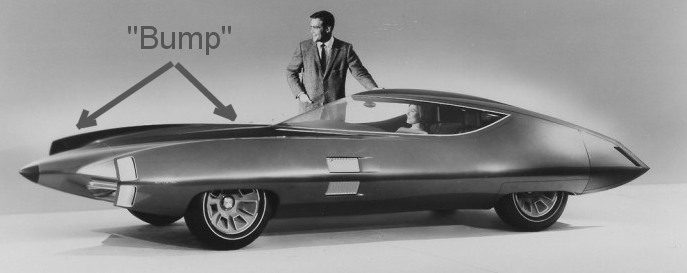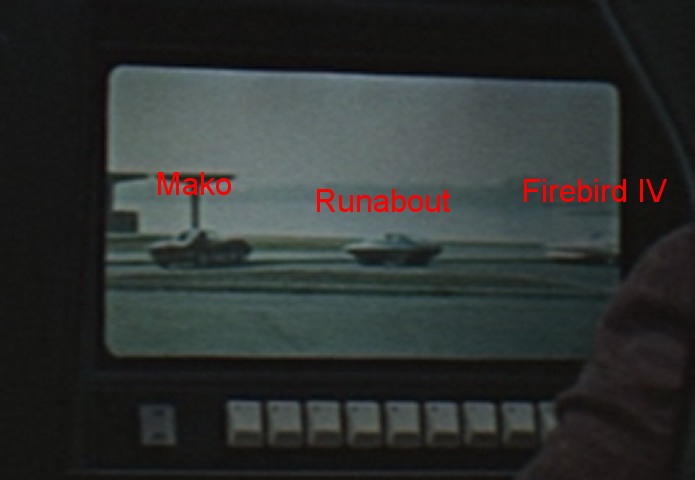Reagans public talk of space weapons is, initially, just that: talk. In the latter half of the 1970’s, the USAF has no plans for space based weaponry, and is initially taken aback by Reagans public discussions. There are some ill-prepared DoD denials of such programs made by various officials; these denials only serve to convince the Soviets that the US is, in fact, developing space weaponry. So, Soviets being Soviets, they have to get there first. The CIA keeps a careful watch over these developments.
By 1980, the CIA can confidently report that the Soviets are in fact testing space-based weapons platforms, intended both to destroy space assets such as communications and recon satellites, and also to drop nuclear warheads onto ground targets. This is, of course, in violation of treaties banning nuclear weapons in space. But the Soviets are convinced that the US is ahead of them in this race. The failure by the US to publicly display their own space weapons confuses and dismays the Soviets; they read this as the Americans being confident due to a massive superiority over the Soviets. When, in fact, the US has almost nothing to show.
The Soviets launch their first Polyus space battlestation in summer, 1980. This terrifies the US public, much as Sputnik did, especially in light of the past several years of Communist advances around the world. After the early US withdrawal from Viet Nam, South Viet Nam was left vulnerable; within 8 months the armistice had broken down and the North Vietnamese Army had swept south, conquering the South. The US did nothing to stop this, being simply tired of the war and too busy with other matters. The Soviets and Chinese saw this as weakness, American unwillingness to really stand up to them. So Communism was aggressively pushed: several nations in Africa and all of Southeast Asia are under Marxist regimes by the election of 1980. The Philippines are in open civil war against a well-funded Communist insurrection; Australia and New Guinea are looking at a Communist Indonesia. Italy, Spain and France are teetering on the edge of becoming outright Communist states.
So, by the 1980 election, the world looks ready for a new global war, one likely to be fought in the heavens. The Polyus, an enlarged dual-module Salyut station armed with, supposedly, guns, rockets, lasers and nukes, is seen orbiting overhead by the US public. Reagans idle talk of space weapons now seem vitally important; his Democrat opponent, Walter Mondale, who had been publicly lampooning Reagans talk of space weapons, suddenly looks really bad. The election is a cakewalk for Reagan, and a mandate for space weaponization.
The Space Shuttle has been flying since 1978, carrying small payloads and, more importantly, crews to the various space laboratories and Space Station I. The Saturn rockets have been launching heavy payloads such as space labs, lunar missions, unmanned probes to the planets and commercial platforms. And now the Neptune comes on scene, with first launch in the spring of 1981. The first launch is officially to be merely a test launch; the initial plan was to simply carry about 800,000 pounds of water… modestly useful as an orbiting payload, but more important just as a proper mass simulator. But in the months before the launch, the water tank is replaced with… something else. What replaces the water is not clear to the public, and the President, NASA and the USAF aren’t talking. Organizations keeping an eye on events, from news media to the KGB, are only able to put together a few confusing details… whatever it is, it’s heavy, consuming the total 1,000,000 pound payload of the Neptune, while being relatively compact. Thus, it’s dense. Blurry photos taken through a hangar door show a USAF insignia on the side of a large metal cylinder. At the same time, Aviation Week reporters start putting together a few disparate facts: several Minuteman ICBMs have been recently removed from their silos; the upper stage and their nuclear payloads have been removed. General Electric was working on a prototype of a new generation space nuclear reactor, capable of putting out in excess of one megawatt of electrical power; the prototype has disappeared from the Nevada test site. Other details come together to indicate that whatever the Neptune is launching, it is going to be impressive. Several clumsily and hurriedly planned espionage efforts are detected and stopped. In April of 1981, with Reagan watching from the stands, the first Neptune launches, sending it’s payload into a 300 nautical mile orbit with a surprisingly high inclination for a Florida launch. Officially, the payload remains merely a “mass simulator,” but nobody believes that.
Ground based telescopes show a compact structure, bristling with sensors, antenna, solar panels, one nuclear reactor that seemingly has not yet been turned on, and doors. Lots of doors. This “mass simulator” looks like the most dangerous thing in the solar system, and it terrifies the Soviets. Any plans they may have had about using Polyus to take out American space assets are put on hold; the US space battlestation is a monster compared to the USSR’s relatively pitiful space platform. Especially since the Soviets know that the Polyus was hastily assembled, and most of the engineers who put it together are uncertain that half the systems will even work if called upon.
What the Soviets don’t know about the American “mass simulator:” That is, in fact, all it is. A mockup made from a million pounds of aluminum, with a few spare RTG’s to provide a little bit of power and neutron radiation, to make the lights blink and the phony sensor stalks to open up. The inside of the shell is merely a tightly-packed structure of spot-welded aluminum beams. Some off-the-shelf Apollo RCS systems give it the ability to orient itself, to make it look like it’s doing something important.
The 1980’s begin with the Soviets and the Americans staring at each other across the oceans, each convinced that the other is further ahead in the race to weaponize space than it really is. But the race is now well and truly on: the “mass simulator” bought the US time to really get going; the Soviets are not willing to pull any stunts so long as that monster is overhead, but they, too, are plowing ahead at full speed to perfect weapons systems and platforms.
At the same time, NASA has plans for the Neptune booster: real lunar bases, manned missions to Mars, asteroids and Venus, and solar power satellites. But now it looks as if the American manned space program, so long a supposedly “civilian” program, is about to be overtaken by military needs. Will NASA be forced to share resources – launch vehicles, launch sites, personnel – with the USAF? Will the USAF run the space program? Will the USAF fracture, forming a US Space Force, perhaps with a portion of the US Navy?
To be continued
















